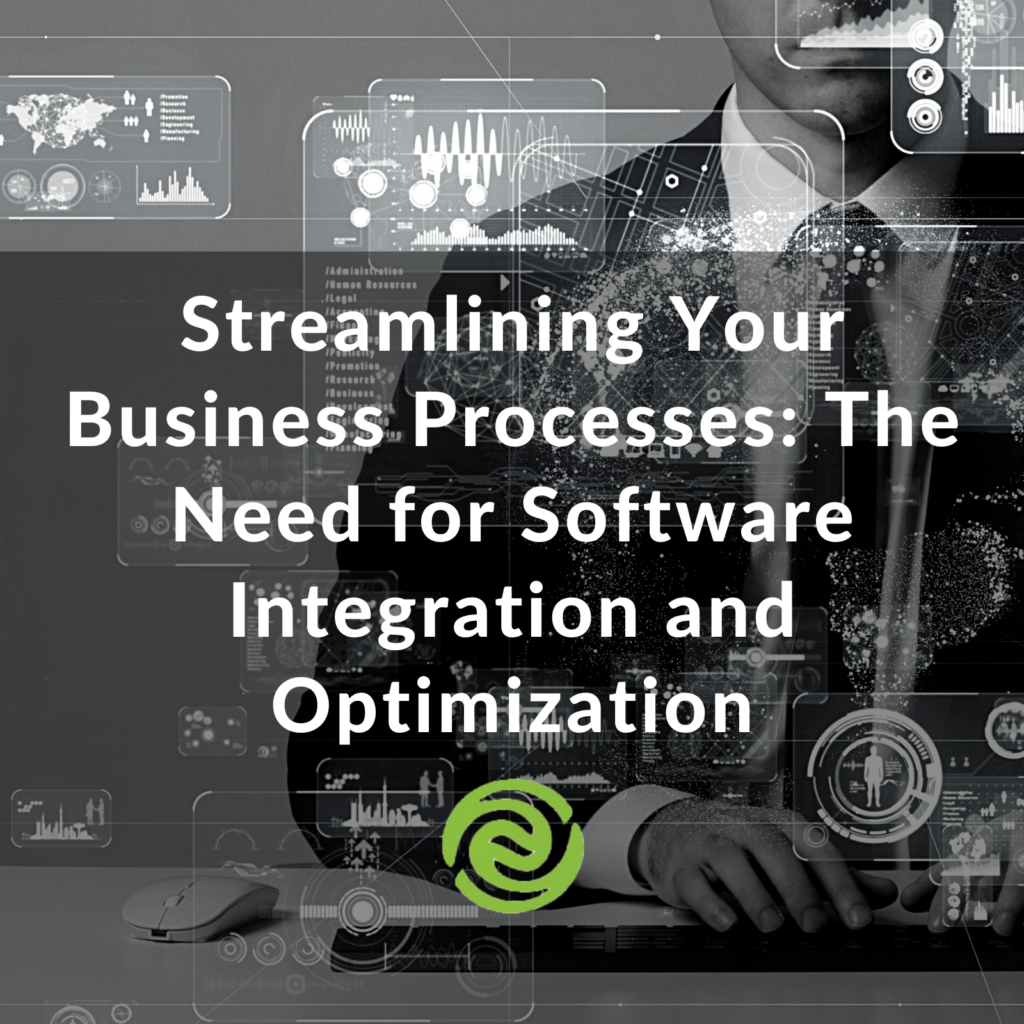A common pain point for many of our prospective clients is the persistent challenge of…
Streamlining Your Business Processes: The Need for Software Integration and Optimization

In the dynamic world of business, technology is the driving force. Ensuring smooth operations through efficient software systems is vital for optimal productivity and customer satisfaction. To achieve this efficiency, your company must integrate software systems to optimize outcomes and not lose ground on profitability.
But what are integrations and how do they directly benefit your business when implemented properly? Find out here as we dive into identifying integrations and what to consider when adding integrations within your existing software systems.
Understanding Integrations and Their Methods
In simple terms, an integration is the process of making different software systems ‘talk’ to each other, ensuring that they work seamlessly together. Think of integrations as the link between systems. That being said, there are four main methods of integrations. Let’s break them down here.
1. API (Application Programming Interface): This allows two applications to communicate and share data. Think of APIs as the way two software systems talk to each other to connect them together. Great example: You want to be able to transfer sales orders and prospects from your CRM directly into your order entry system. You can use an API between the two systems to transfer the orders and turn prospects into new customers automatically.
2. System Integrations: This involves writing code to create a method for two software systems to talk to each other, typically when an API is not available. This allows you to combine multiple subsystems into one unified system making it easier to manage, track data and run your business the way you want to run your business — efficiently.
3. Data Integrations: This involves having data passed in the back end of your applications to ensure data is shared and consistent across multiple systems.
4. Import/Export: This allows for data transfer from one system to another, typically using a common format like CSV or XML.

When to Consider Integrations: Spotting the Signs
Short Staffed + Human Errors
In the wake of the pandemic, many companies are running short-handed. With limited staff, your remaining team members may find themselves grappling with mundane manual tasks that eat into valuable time that could be spent on tasks that will move the business forward. If double key entries, typos, and inverted numbers have been popping up most often, or things are just not getting done the way you need them to or not at all, this could be a sign that it’s time to adopt an automation or integration strategy to alleviate the risk of human error.
Duplicate Work
Unnecessary duplicated work is another red flag. Your employees should be focusing on growth-oriented tasks instead of repeating actions because of a lack of synchronization between different systems. Over time, these cumbersome and outdated processes can lead to substantial losses in profitability.
Work Woes
When your employees are constantly frustrated by these inefficiencies, it’s a clear sign that your current software systems are holding your company back. A lack of scalability in your systems further compounds these issues, limiting your ability to adapt and grow in response to market demand.
Customer Dissatisfaction
Another sign to consider is a big one. If your customers are expressing frustration due to delayed or error-prone services, it’s high time you considered optimizing your software systems. Their satisfaction is your success, and it’s crucial to address any factors that could compromise it.

Bridging the Gap: BPA and RPA
Business Process Automation (BPA) and Robotic Process Automation (RPA) are two key solutions that relate to software integrations and streamline productivity. BPA involves the use of technology to automate overall, more complex business processes while RPA uses software robots or “bots” to automate routine, rules-based tasks. Both methodologies can alleviate the stress points mentioned above by automating repetitive tasks, reducing manual errors, and ultimately improving overall efficiency, which leads to greater customer satisfaction. Win, win, win.
Step-By-Step Guide to Process Automation
Before you go all-in on adopting integrations and automations for your systems, Swip Systems recommends doing an audit on your existing systems before you do anything else. For this and all other steps, we’re happy to help provide clarity and context for your specific business goals and objectives.
Here’s your step-by-step guide to identifying and optimizing software systems and your business.
- Identify Tasks: Pinpoint manual, repeatable tasks that could be automated or tasks that are bottlenecking the process.
- Select the Right Automation Solution: Choose an automation software or technology that suits your requirements.
- Develop an Automation Workflow: Design the process that the solution will follow.
- Implement and Test the Automation: Apply the solution, and test its efficiency and effectiveness.
- Review and Optimize: Continually monitor the system and make necessary adjustments.

The Bottom Line…Recognizing the Need for Software Systems Integrations
You know your business better than anyone else. If you’re experiencing any of the issues mentioned above, it’s likely that an integration could solve your problems. If you’re unsure, your best resource is your team – those in the trenches of your technology, day-to-day. They can highlight the areas in need of improvement, which will guide you toward the ideal solution.
If this is all too overwhelming there is help available. Swip Systems can comprehensively assess your systems and provide a range of solutions. When you’re ready to start brainstorming how custom software could increase your business’s efficiency, significantly improve customer experience, and grow revenue, let’s explore the possibilities together. Don’t let the assumed costs of developing software derail the investigative process. Swip Systems will help you brainstorm, identify the right opportunity, and move forward in a systematic way that eases the fear of the unknown and works with your timeline and budget. We love to help and offer no-obligation advice. Contact us today. 618.346.8014






